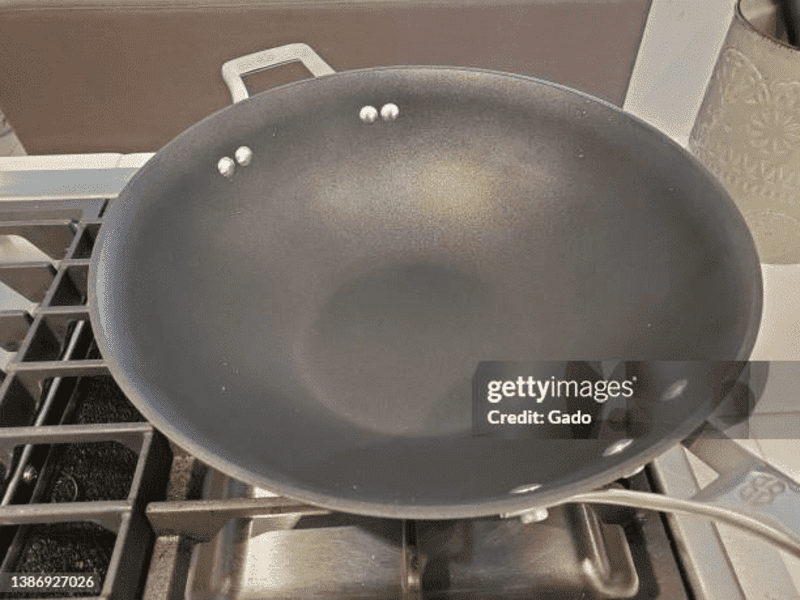No one likes food sticking to the bottom of pans or pans taking forever to clean; thus, it’s no surprise that non-stick Teflon and other polymer pans that are easy to clean are such popular cookware. These pans have a potential downside, though: if they get too hot, they can release toxic fumes that can get into your lungs and cause a respiratory illness called Teflon flu.
In 2023, more than 265 cases of Teflon flu (more accurately called polymer fume fever) were reported in the United States, the most since 2000. Caused in part by a chemical commonly used in these kinds of pans, the fever produces flu-like symptoms that either clear up on their own or require medical attention. While most polymer pans are safe to cook with when handled properly, it’s worth knowing what polymer fume fever is, how it affects the body, and how it can be prevented or treated.
What Causes Teflon Flu?
Many Teflon and polymer pans are made of polytetrafluoroethylene (PTFE), a very durable manufactured chemical that prevents food from sticking to its surface but also belongs to a group known as perfluoroalkyl and polyfluoroalkyl substances (PFAS).
These types of “forever” chemicals take decades or even centuries to break down; they can also increase the risk of certain cancers and harm the immune and reproductive systems. When Teflon and polymer pans are heated above 500 degrees Fahrenheit (260 degrees Celsius), the PTFE inside them breaks down into fine particles that are emitted as fumes; when someone inhales those fumes, they can contract Teflon flu.
How Does The Flu Affect The Body And How Can It Be Resolved?
https://gty.im/1901961408
Once contracted, Teflon flu or polymer flu fever can cause a person to develop numerous flu-like symptoms within 12 to 24 hours after inhalation; these include chills, coughing, nausea, fever, chest tightness, fatigue, and headaches. For most people, these symptoms will clear up within a day or two; for others who have underlying heart or lung conditions, these symptoms may last longer and become worse.
If someone experiences any of these symptoms during or after cooking with one of these pans, they should move away from the source of the fumes; they should also drink a lot of water. They can take over-the-counter medications like ibuprofen and acetaminophen to relieve any symptoms. If symptoms progress or worsen to the point where they have shortness of breath or respiratory issues, they should contact their doctor immediately.
How Can Someone Avoid Getting This Flu While Cooking?
Since the PTFE in nonstick Teflon and polymer pans breaks down and creates fumes at temperatures above 500 degrees F (260 degrees C), people should only cook with them on low or medium heat and never on high heat for long periods of time. They should avoid preheating pans without food in them on high heat on stovetops or putting them in ovens at high temperatures. When cooking, they should open the kitchen windows and turn on the exhaust fans to avoid inhaling any smoke.
Manufacturers of these pans encourage their users to check them for damage, wear, and age and get rid of them if they’re more than three to five years old. Furthermore, since perfluorooctanoic acid (PFOA), a chemical previously used in Teflon that’s been linked to increased risks of cancer and immune deficiencies, wasn’t banned in the U.S. until 2014, people should throw out any pans that were made before 2014.
If they’re concerned about using Teflon pans in any capacity, they can also switch to using alternatives like carbon steel, ceramic, or cast iron pans, although these alternatives may not have the same level of nonstick quality that Teflon pans do.
Final Thoughts
Teflon and polymer pans both offer many benefits when cooking, thanks to their non-stick surfaces that make it easy to move food onto, around, and off them and to clean them afterwards. Though the pans can be found in nearly any home or professional kitchen, people need to be careful when cooking with them over high heat since they contain the forever chemical polytetrafluoroethylene (PTFE). If heated over 500 degrees F, PTFE can create fumes that, when inhaled, cause polymer fume fever, also known as Teflon flu, which can cause mild or severe respiratory issues.
To avoid contracting this flu, people should only cook with polymer pans on low or medium heat in well-ventilated areas; if they want to cook food on high heat, they might want to use ceramic, cast iron, or carbon steel pans instead. By knowing how to safely cook with polymer pans at the right temperature levels, domestic and professional cooks can ensure that polymer fumes won’t harm them when they’re just trying to make delicious food.
Disclaimer: This article is intended simply to provide information. It does not replace the medical advice of a physician. Please speak with your doctor if you have any questions or concerns.
For More Great Content
Total Apex is an all-encompassing content producer. We provide heavily detailed articles every day on entertainment, gaming, sports, and so much more! Check out all our great entertainment content at Total Apex Entertainment. Check us out on X @TotalApexSports and our other sites: Total Apex Sports, Total Apex Sports Bets, and Total Apex Fantasy Sports.




